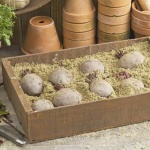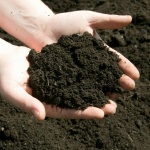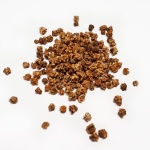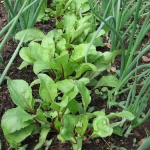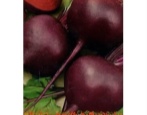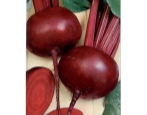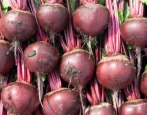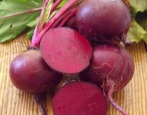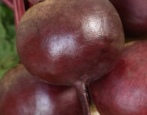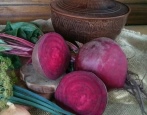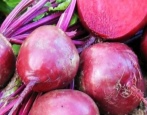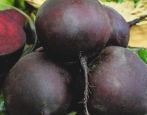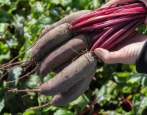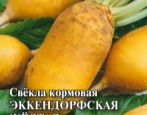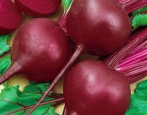
- Authors: Goryachikh N.G., Bychkova V.A., Nuzhdina V.V., Skachkov S.I.
- Year of approval: 2006
- The form: oval-cylindrical, with a pointed base
- Weight, g: 428-469
- Pulp color : white
- Composition : in the Central Black Earth region the sugar content is 17.6%, in the Ural region the sugar content is 19.1%
- Appointment: for pets
- Storage: suitable for winter storage
- Growing regions: TsCHO, Uralsky, Central, Volgo-Vyatsky
- View: sugar
Beet Lada belongs to the category of fodder. The variety has existed for more than 15 years, due to which it managed to win the love of many livestock breeders. Farmers praise it for its beneficial composition and abundant harvests.
Breeding history
The variety appeared thanks to the Breeding Scientific Center of Belarus. Such specialists as Nuzhdina V.V., Goryachikh N.G., Bychkova V.A., Skachkov S.I. available for cultivation in Russia.
Description of the variety
The culture in question is classified as a sugar hybrid. In addition, experts call a vegetable one-seeded, since one plant is formed from one seed.
Characteristics of the appearance of the plant and root crops
This type of beet has a semi-erect, dense (consisting of several dozen leaves) rosette. She has a powerful petiole. The green leaves in the shape of an elongated egg are of moderate length and width, a wavy edge and a glossy surface. Lada blooms with yellow-green flowers, as a rule, there are from 2 to 6 of them. The root crop repeats with its outlines an oblong cylinder with an elongated end, medium in size. The underground part of the vegetable is painted in a white-pink tone, the aboveground part is barely greenish. The consistency of the pulp is fleshy and juicy, its color is white. The weight of beet tubers is on average 428-469 grams. But there are also champions, in black soil a vegetable can grow up to 10-15 kg, there are specimens of 25 kg each. The vegetable is characterized by excellent keeping quality; it can be stored for up to two years.
Purpose and taste of tubers
The described variety is adapted for feeding poultry and animals. It is used not only to save concentrated feed, but also to have a positive effect on the health of livestock. Animals that have Lada beets in their diet increase the quality of their products - eggs, meat, milk. The vegetable tastes sweet due to the high percentage of sucrose in it.
Maturation
It is worth preparing for harvesting 4-5 months after planting. This time falls on the end of September - early October. A mature root crop is recognized by the yellowing greenery and the absence of the formation of new leaves.
Yield
This type of beet is highly productive. On average, from each hectare in the Urals, a farmer can count on 345 centners of root crops, in the Central Black Earth Region this figure is higher - 372 centners.
Growing regions
The geography of the distribution of Lada includes not only the Central Black Earth and Ural regions, but also the Volga-Vyatka and Central regions.
Growing and care
Sowing the seeds of this type of beet begins in the third decade of March - early April, when the soil warms up to +7 degrees. One thousand seeds can be sown on each hundred square meters. Given the fact that the roots are bulky, when planting, a distance between plants should be observed, equal to 15-25 centimeters. You should also leave a gap of about 45 centimeters between the rows.
It is not advised to cultivate a hybrid for two years in the same place, since the level of soil fertility decreases and diseases accumulate.The best option is to cultivate beets in areas where peas, wheat, broad beans, rye, and corn were previously grown.
Caring for Lada, it is necessary to systematically loosen the soil after moistening. And also after the formation of the first pair of leaves, the beets need to be thinned. In the same period, fertilizers are introduced for the first time, after which the procedure is repeated once every 3-4 weeks. From time to time you need to free the garden from weeds. Watering is carried out as the soil dries out. It is advisable to stop irrigation approximately 3-4 weeks before harvest.
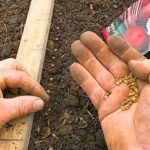
Beetroot tolerates cold snaps, therefore it is widely grown in the open field. When planting beets, you need to correctly determine the sowing time, choose a suitable place, prepare the beds, and do pre-sowing seed treatment.
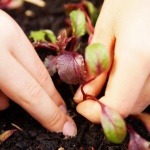
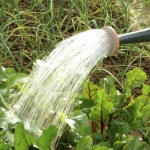
Soil requirements
The hybrid feels good in chernozem soils with moderate acidity. Sandy and clayey soils are not recommended as they require too much fertilization on the eve of planting.
Required climatic conditions
When deciding on a place for a garden, you should pay attention to areas open to sunlight.
Disease and pest resistance
The hybrid exhibits excellent resistance to clump rot and flowering. However, if simple rules are violated, it can be attacked by a root-eater, a beet bug, a bean aphid, a click beetle, and get sick with cercospora, phomosis, powdery mildew. To protect the vegetable from ailments and pests, it is advised to timely saturate the soil with minerals and apply pesticides.

Review overview
In general, gardeners are unanimous in a positive assessment of the above-described variety. They celebrate the quality of the seeds that sprout quickly, the large size of the tubers and the decent harvest.
